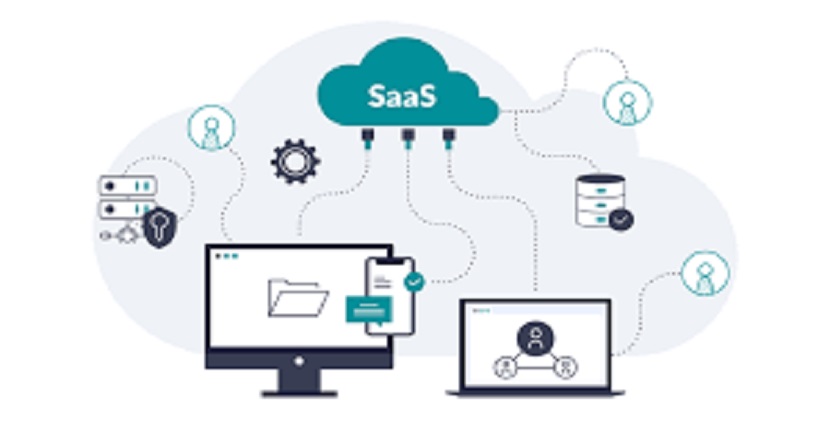
February 16, 2024, 0 Comments
Understanding SaaS Management: Optimizing Cloud-Based Solutions
SaaS management
SaaS management within an organization is the process of effectively optimizing SaaS applications. It includes various tasks like ensuring security and compliance, managing user access, controlling cost, and monitoring usage. SaaS management is crucial for multiple companies to increase productivity and perform different operations from SaaS applications.
It gives us a wide range of activities step by step, first by selecting the appropriate solutions, then implementing this solution, and then optimizing it. Many business companies rely on SaaS applications to effectively manage their complex functions.
Importance of SaaS Management
SaaS management is crucial for the following reasons:
- Cost optimization: Management helps companies control costs. Cost optimization can be done by negotiating with vendors and identifying underutilizing subscriptions.
- Security and compliance: It ensures that SAAS applications meet the security requirements. It minimizes the risk of regulatory violations and data breaches.
- User productivity: SaaS management optimizes the performance of SaaS applications and increases productivity.
- Centralized control: It provides visibility and centralized control of the SaaS application. It allows administrators to monitor usage, manage access and follow policies.
- Data insight: This platform provides insight into user behaviour, application usage and performance metrics. It optimizes strategies
Journey of SaaS management
The journey of SaaS management is as follows:
- Market research and idea generation: The first step includes searching the market to generate new ideas to consider customer points.
- Conceptualizing and planning: The next step is to create a plan. In this step, we make future highlights and create goals, business models, and timelines.
- Development and implementation: After the plan, the next phase is development. It involves developing infrastructure, testing the product’s usability, etc. In the next step, the product is launched in the market before it is testing to set up servers and configure databases.
- Customer support: Once the product is in the market, the next step is customer support. It involves different tutorials and training programs to get customers to use this product effectively.
- Feedback: After the product is successful in the market, the next step is to get feedback through different surveys and forms.
- Financial management: Financial management is done to ensure the long-term stability of the business. SaaS business can be managed effectively by pricing strategy, billing and expense management.
Best practices for SaaS management
Here are some best practices of SAAS management:
- Customer-centric approach: In this practice, we need to consider the desires of customers. It involves communication with customers, collecting feedback, and improving functions to increase the input.
- Data security and privacy: Security measures ensure compliance with regulations and protect the data of customers. It includes access control, security audits, and encryption.
- Performance monitoring and optimization: Proactively monitor the performance of the SaaS application to optimize resource utilization. Monitoring is necessary to detect and address performance issues.
- Customer support and success: We can support customers through different forums like email, and chats. We can support customers through multiple resources like tutorials and documentation so that customers can use your products maximally.
- Regular updates and maintenance: SaaS products should be up to date and maintained regularly. To reduce disturbance, tell the customer about maintenance windows and upcoming changes.
- Continuous improvement: The company should make continuous improvements in your organization to encourage feedback and innovations.
Security and compliance in SaaS management
Security and compliance are helpful to maintain trust and protect the customers data.
Here are some best practices for security and compliance:
- Data encryption: We can use an algorithm to encrypt data. Between client devices and servers, data is encrypted during communication.
- Access control: Access control can assure you that only authorized users can access your data. RBAC allows the implementation of user roles and responsibilities.
- Security incident response: Develop a plan in response to security incidents. This plan contains roles and responsibilities and different steps to overcome security issues.
- Data privacy and compliance: Users must be compliant with data privacy regulations. SaaS management must implement data privacy-increasing features like anonymization.
- Regular audits and assessments: Management conducts security assessments and audits to identify security issues. It must hire a third-party officer to check security issues independently.
- Employee training and awareness: Launch the security training programs within your organization to train employees. So they can better understand the security risks. So they can adopt best practices to minimize security issues.
Advantages of SaaS management to companies
It has the following advantages for businesses:
- Cost efficiency: It contains a solution subscription low in cost. Businesses can take monthly or annual subscriptions to avoid buying costly software.
- Scalability: Management allows the user to scale their usage. Scalability helps businesses quickly to change workload, user requirements and market conditions.
- Accessibility: It allows users to access from internet. This accessibility permits users to increase remote work and collaborations. Moreover, it can be customized to meet the needs of the business.
- Automatic updates and maintenance: SaaS management provides updates and maintenance and ensures that users have access to the latest features. It avoids the burden of managing software.
- Security compliance: SaaS management provides security measures to protect user data. It includes regular security audits, access control, and data encryption.
- Data analytics and insights: It includes data analytics to allow businesses to gain insight from data. It involves data-driven decision-making, optimizing, and monitoring the performance.
- Customer support and services: SaaS management provides customer support including documentation, training, and technical assistance.
Challenges
Some challenges of SaaS management are as follows:
- Data security and privacy: It ensures the security of data. Businesses implement security measures to protect data from violations and breaches.
- Compliance and regulations: SaaS management must comply with regulations like GDPR. It requires documentation, adherence, and careful monitoring.
- Performance and reliability: Management must provide high performance and reliability. To make sure that the user has uninterrupted access to the application, the business must monitor response time and service availability.
- Cost management: Business must carefully manage their cost. They should use SaaS subscription instead of manual software to save time and cost. They should optimize usage and avoid over-provisioning.
- User adoption and training: it should ensure that users are using effectively SaaS applications. It can be challenging because users are converting from traditional systems to new technologies.
Conclusion
SaaS management is crucial for those businesses that are supporting cloud-based software. In this way, many companies can optimize their productivity and increase growth. it can implement best practices to take different advantages like cost effectiveness, scalability, accessibility, security compliance, and customer support.
With many advantages, it has challenges like ensuring data security, compliance with regulations, and maintaining performance. Overcoming these challenges requires different security measures and plans.
FAQs
What is SaaS management?
SaaS management is managing and monitoring the purchases, licensing, and renewal of all the SaaS applications within a company’s technology.
What are SaaS management tools?
It includes a central admin console that can effectively manage, optimize, automate, and enable SaaS use by employees.
How do you manage a SaaS?
We can effectively manage SaaS to know which software applications exist in your organization and then add in the catalog. Vertices platform provides visibility of all subscriptions.





